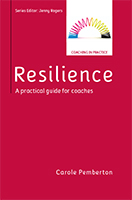
There is a secret 70% of us share. Imagine: you have just been promoted, or you have been recruited to a new organisation or you have received recognition for your achievements. In response your phone is full of emails, texts and voicemails offering congratulations. You thank them for their good wishes, and at the same time, you are thinking:
- I am not ready for this
- They will soon find out that I am not up to it
- It was luck
- It was a poor field otherwise they would not have chosen me
- I am only there as a token
Welcome to the Imposter Syndrome Club. It is a club that research suggests 70% of us belong to at some point in our lives, and yet we assume that it is ‘only us’ that is undeserving, has self doubt, or is anxious about taking on a new challenge. Because the original research, by Pauline Clance and Suzanne Imes was solely conducted with women it is often suggested that it is a woman’s issue, and male colleagues live their working lives untouched by self doubt. Sitting in on a coaching session would quickly dispel that myth. It affects the successful as much as those aspiring to success, men as much as women. Why? Because Imposter Syndrome is part of the human condition.
Its roots are developed in childhood. The reality that as a child we cannot do things as well as the people who matter most to us– our parents, begins the process of comparison. Those feelings are magnified by childhoods which bring trauma. Growing up in a family where there are issues of addiction, abuse (mental and physical) or a pattern of hyper-criticism, fuels the need to show that we can be good enough, whilst still believing we never will be. It drives ambition and determination, but it does not bring the rewards which we seek. Instead it fuels, anxiety, fear of failure, perfectionism and self doubt.
So given, that 2/3 of us are walking around with internal dialogues telling us we could be exposed at any moment, why does it remain a hidden secret? The answer may lie in the simple truth that we know what we think, but we only see what other people do. You see the person standing on the stage receiving their Oscar, their sports award or their recognition for business success and you buy into their appearance. They look confident, their success looks seamless and based on a far greater talent than you could ever have. What you don’t see is the journey that got them there. You can’t hear their internal dialogue remembering the times they nearly gave up, how they only got the part by chance, or how they live in fear of the next competitor.
So if it is part of being human, does it have any value to us? It can, if we can turn it from a toxic internal voice to a useful guide. In a 2016 TedEx talk Lou Solomons shared how she learnt in therapy to separate out the mean inner voice by giving it a name, and then creating a supportive countervailing voice. Recognising when the mean friend was showing up she then called on her strong friend’s voice to outwit the internal bully. Learning how to manage our thoughts through being able to objectify them is extremely valuable, because it makes conscious, what is unconsciously ruling us, but it is not the only way.
If we accept that the Imposter Syndrome is part of being human, then we can consider what its value could be if we could detoxify its impact.
- If we could take a leap of faith and accept that the person opposite us probably has the same thoughts and feelings as we do, then we would be more open about not having all the answers and look to offer and seek support more readily.
- If we saw our limited knowledge, not as boundary to what we can achieve, but as a driver to our curiosity, then we would achieve more.
- If we viewed ourselves not as a flawed professional but as a work in progress then we could be kinder to ourselves about not getting it right all the time.
- If we accepted that when we take on something new we cannot be as good as those who have been doing it for years, but that motivation is the fuel for learning.
- If we saw the thoughts and feelings of being an imposter as drivers to action, rather than brakes on our potential then we would risk more with less fear.
In the 17th century, the French philosopher wrote, “Kings and philosophers shit, so do ladies”. If we accept that not only do we all have the bodily functions regardless of our status or success, but that we all have similar internal thought processes regardless of our seniority, we could move Imposter Syndrome from being our individual secret to a shared condition of being human.












